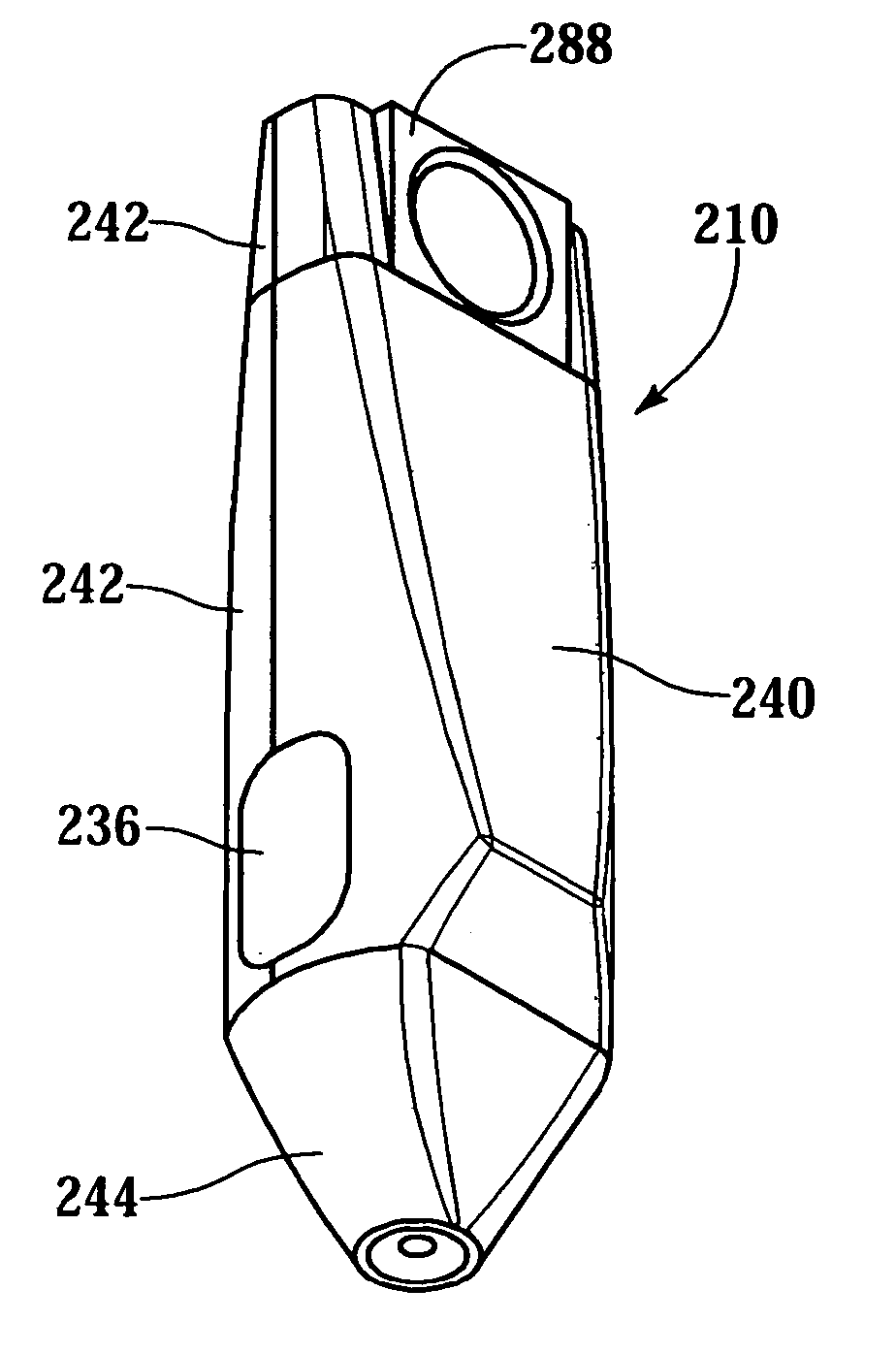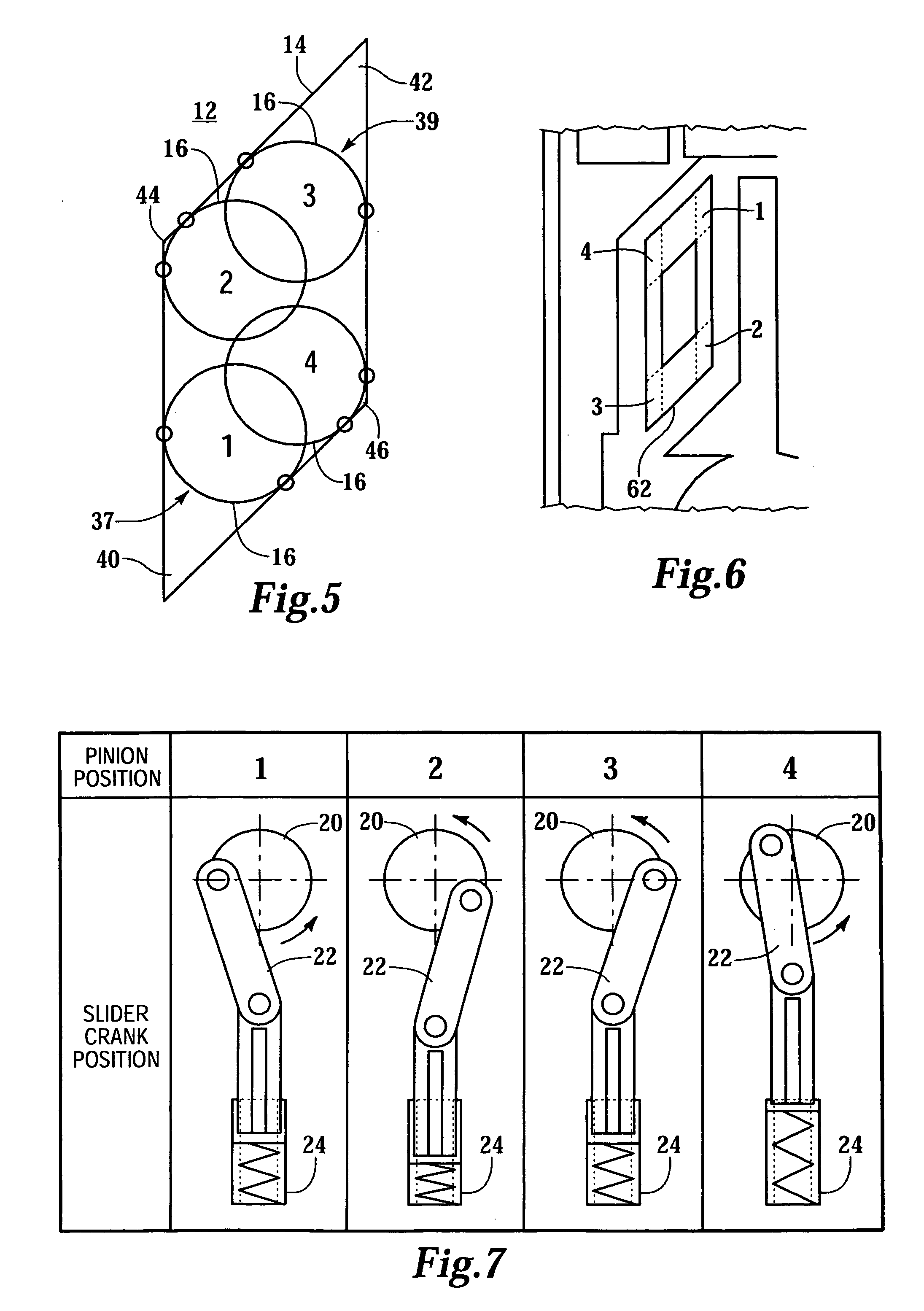Lancing device
a technology of laceration and laceration plate, which is applied in the field of laceration plate, can solve the problems of insufficient laceration depth, erroneous analysis, and variation of the mechanical quality of the spring, and achieves the effects of reducing protruding parts, facilitating gripping the device, and facilitating operation
- Summary
- Abstract
- Description
- Claims
- Application Information
AI Technical Summary
Benefits of technology
Problems solved by technology
Method used
Image
Examples
Embodiment Construction
[0045] FIG. 1 shows a lancing device 10, in perspective view, for use with a lance (not shown). The device 10 comprises a frame 12 supporting a parallelogram-shaped rack 14. The rack 14 is better seen in FIG. 2 which is a side elevation view of the lancing device 10. FIGS. 3 and 4 show the reverse side of the frame 12 shown in FIGS. 1 and 2. A pinion 16 is rotatably supported in the rack 14. Rotation of the pinion 16 is coupled to movement of the rack 14. A slider-crank system 18 is coupled to the pinion 16 and comprises a drive wheel 20 and drive arm 22 coupled to a lance holder 24. The drive wheel 20 may be integral with the pinion 16. The lance holder 24 may comprise a rail 26 to interface with a slot (not shown); the lance holder 24 moves linearly in the slot in response to rotation of the pinion 16.
[0046] A drive spring 28 applies force to the frame 12 for moving the rack 14, wherein the pinion 16 is rotated counterclockwise (clockwise in FIGS. 3 and 4) and the slider-crank sys...
PUM
 Login to View More
Login to View More Abstract
Description
Claims
Application Information
 Login to View More
Login to View More - R&D
- Intellectual Property
- Life Sciences
- Materials
- Tech Scout
- Unparalleled Data Quality
- Higher Quality Content
- 60% Fewer Hallucinations
Browse by: Latest US Patents, China's latest patents, Technical Efficacy Thesaurus, Application Domain, Technology Topic, Popular Technical Reports.
© 2025 PatSnap. All rights reserved.Legal|Privacy policy|Modern Slavery Act Transparency Statement|Sitemap|About US| Contact US: help@patsnap.com



